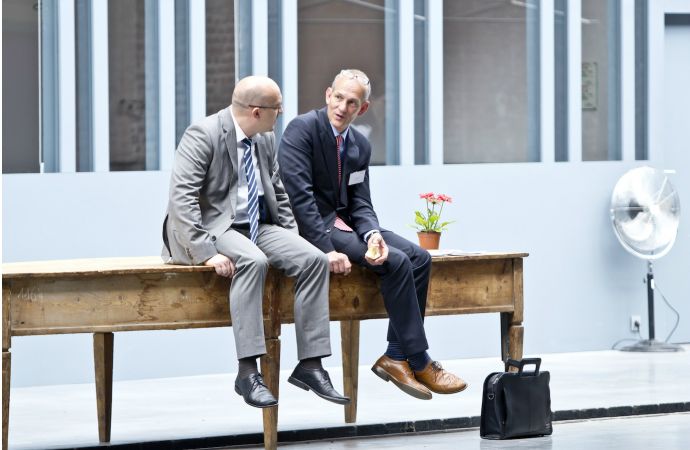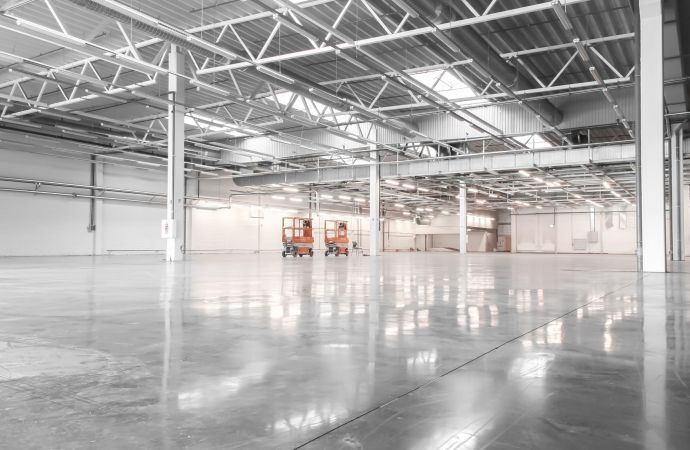The refrigeration devices of the future will provide heating alongside cooling, argues Eric Delforge of the European Heat Pump Association (EHPA).

Eric Delforge (r)
The refrigeration devices of the future will provide heating alongside cooling, harnessing natural refrigerants to help reduce electricity consumption and wean the world off fossil fuels, argues Eric Delforge of the European Heat Pump Association (EHPA) in an exclusive interview with Accelerate Europe magazine.
Driven by innovation and a passion for sustainable solutions, EHPA board member Eric Delforge is keen to discuss ways of integrating heat pumps into smart energy systems on a massive scale. Comparing synthetic fluids to tobacco, he sees natural refrigerants as the only sustainable solution for the industry.
“In every refrigeration device, to a certain extent the refrigeration is a by-product of a cycle which in fact offers more heating than cooling,” says Delforge, who chairs an EHPA working group on industrial and commercial heat pumps.
The trend towards more integrated systems is sweeping through the HVAC&R world just like in other sectors. “Especially in industry – sectors that use or need refrigeration also need heat, upstream or downstream. It’s should be self-evident to combine the use of heating and cooling,” the expert argues.
Heating and cooling…with natural refrigerants
Let us take the example of conventional fridges. Like other refrigeration technology, they use the traditional Carnot thermodynamic cycle of expansion and compression to reject energy. The rejected heat is pushed into the room via a heat exchanger at the back of the fridge or into the atmosphere via rooftop ventilation. “If on top of that you’re burning fossil fuels for your heating, then in fact you’re investing in a heating device twice,” Delforge argues.
Rather than evacuating waste heat solely into the building, the EHPA expert believes refrigeration equipment should be connected to space heating systems. “In a house, you always need hot water – even in summer. The heat exchanger in your fridge should feed into your water boiler,” he argues.
The logical next step would be for manufacturers of cooling devices and their boiler-making counterparts to offer heating and cooling in a single product – saving energy by requiring just one electrical input. “Why not? Heating and cooling with the Carnot cycle is simple, energy-efficient and doesn’t need fossil fuels,” says Delforge.
“Ideally it should use natural refrigerants,” he adds.
He argues that the effort required to deliver this vision pales in comparison to the trials of finding and extracting the Earth’s remaining fossil fuels.
The dairy industry epitomises his vision. “At the end of the chain dairy products need to be cool. But before you can process the milk, it needs to be pasteurised. So the cooling plant offers waste thermal energy to provide water at 90 degrees Celsius for the pasteurisation process. You only need one electrical motor to do that, and the hot air from the cooling machine is reused,” the EHPA expert explains.
Heat pumps in the home
At the domestic and light commercial scale, he expects heat pumps to eclipse refrigerators in terms of their importance to the HVAC&R sector. What place for natural refrigerants here? According to Delforge, heating will play a crucial role in their growth.
“Most domestic energy goes into heating. Take Sweden: 90% of households use heat pumps, not condensing boilers. Imagine how much refrigerant they account for! The revolution is going to take place in households – switching from fossil fuels [in condensing boilers], which will one day be extinguished, over to heat pumps or hybrid systems,” he says.
“Domestic is going to be a game-changer. We’re talking about a lot of devices. To influence the domestic market, you need to reach many more individuals – it’s another public entirely,” he says.
For refrigerants in certain applications, we need bold decisions from legislators."
- Eric Delforge, EHPA
Delforge highlights the potential for governments to help change the game, drawing parallels with European legislation introduced to phase out incandescent light bulbs.
“I don’t think there’s any sensible citizen who’d like to turn back the clock on light bulbs. For refrigerants in certain applications, we need bold decisions from legislators,” he says, citing the example of Denmark, where a political decision to ban most uses of HFCs is already delivering innovation benefits as demand for alternatives soars.
Delforge is dismissive of those who believe that 2050 – the deadline by which the EU is seeking to cut carbon emissions to 80% below 1990 levels – is a long way off.
“Investments in thermal energy-generating devices are meant to last 20-30 years. A decision today to use synthetic refrigerants means being held hostage to consume them for 30 years,” he warns.
Delforge compares today’s battles over energy sources and the refrigerant mix to the past tussles of health advocates over tobacco. “It took fifty years for it to be accepted that tobacco is bad for your health. Production and use of synthetic refrigerants and fossil fuels are simply bad for our children and for the planet,” he says.
“There is no other pathway than to step away from carbon-emitting activities and massively apply heat pump technology for heating, from domestic and commercial to industrial applications,” argues Delforge, stressing the importance of ensuring that heat pump manufacturers opt for natural refrigerants. “Tomorrow is too late,” he warns.
Related stories

_1611676581.jpg)

